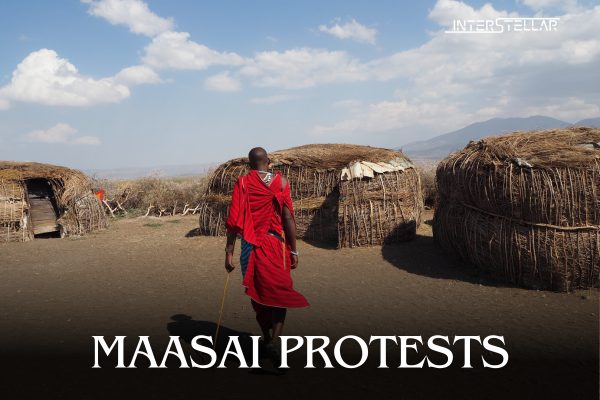Maasai Protest Evictions Amidst Controversial Conservation Efforts
Thousands of Maasai Face Eviction in Tanzania’s Ngorongoro Crater
In Tanzania, the usually serene green hills surrounding the Ngorongoro Crater have turned into a site of protest. Tens of thousands of Maasai herdsmen, dressed in their iconic blood-red shuka cloths, have been demonstrating against their forced eviction from ancestral lands in the name of conservation. This is not the first time the Maasai have faced such displacement. Historically, they were removed from the Serengeti in the 1950s when it was designated a national park by the British colonial government. Now, the Tanzanian government seeks to move them again from the Ngorongoro Conservation Area, this time for luxury tourism, trophy hunting, and further conservation projects.
The Ongoing Struggle for Maasai Rights
The Maasai have long resisted these forced relocations, arguing that their presence is not only harmless but essential to the ecosystem. Maasai lawyer Denis Oleshangay, who has been vocal in opposing these evictions, describes the situation as a “cultural genocide” and a “crime against humanity.” The Maasai people have lived in harmony with the land for generations, and many believe that the luxury hotels and safari lodges that have sprung up in the area are far more damaging to the environment than their traditional practices.
The Tanzanian government, however, claims that these evictions are necessary to protect the Ngorongoro area from overpopulation and the environmental impact of cattle grazing. Despite government assertions that the relocation is voluntary, reports of intimidation, violence, and severe restrictions on access to basic needs like food and healthcare paint a different picture.
Global Conservation vs. Indigenous Rights
This conflict is part of a broader global debate on conservation and Indigenous rights. In 2022, Tanzania joined 195 other countries in adopting the 30×30 conservation pledge at the UN COP15 nature summit. This initiative aims to protect 30% of the world’s land and oceans by 2030. However, the pledge also emphasises the need to include Indigenous people in these conservation efforts. Critics argue that Tanzania’s approach to conservation, often referred to as “fortress conservation,” overlooks this important aspect by treating Indigenous communities as obstacles rather than partners in protecting biodiversity.
Similar cases of forced evictions in the name of conservation have been documented globally, from Thailand to the Congo Basin. These actions have displaced hundreds of thousands of people, highlighting the need for a more inclusive approach to conservation that respects Indigenous rights and knowledge.
The Future of Conservation and Indigenous Inclusion
As the 30×30 framework continues to be implemented, there is growing pressure on international conservation organisations and governments to ensure that Indigenous communities are not only protected but actively involved in conservation planning. Experts like Jennifer Corpuz of Nia Tero stress the importance of directing funding to Indigenous groups and adopting measures that guarantee their rights and participation.
The upcoming COP16 in Colombia will be a critical moment to reassess these goals. Activists and community leaders like Oleshangay are determined to keep fighting for the Maasai and other Indigenous peoples to have a say in the future of conservation. While the 30×30 pledge holds promise, its success will depend on truly inclusive implementation that does not marginalise those who have lived on and cared for these lands for centuries.





